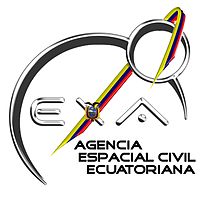
The Dnepr rocket was a space launch vehicle named after the Dnieper River. It was a converted ICBM used for launching artificial satellites into orbit, operated by launch service provider ISC Kosmotras. The first launch, on April 21, 1999, successfully placed UoSAT-12, a 350 kg demonstration mini-satellite, into a 650 km circular Low Earth orbit.
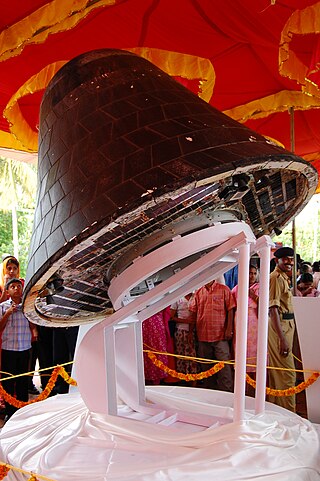
The year 2007 contained several significant events in spaceflight, including a Chinese ASAT test, the launches of the US Phoenix and Dawn missions to study Mars and Asteroid belt respectively, Japan's Kaguya Lunar orbiter, and the first Chinese Lunar probe, Chang'e 1.

The Tsyklon-3, also known as Tsiklon-3 and Cyclone-3, GRAU index 11K68, was a Soviet, and subsequently Ukrainian orbital carrier rocket. Tsyklon 3 rocket body debris accounts for more than 500 pieces of space debris.
Delfi-n3Xt is a Dutch nanosatellite which is operated by Delft University of Technology. It was launched on 21 November 2013. It is a three-unit CubeSat which will be used to demonstrate propulsion and communications systems for future missions.

The year 2011 saw a number of significant events in spaceflight, including the retirement of NASA's Space Shuttle after its final flight in July 2011, and the launch of China's first space station module, Tiangong-1, in September. A total of 84 orbital launches were conducted over the course of the year, of which 78 were successful. Russia, China and the United States conducted the majority of the year's orbital launches, with 35, 19 and 18 launches respectively; 2011 marked the first year that China conducted more successful launches than the United States. Seven crewed missions were launched into orbit during 2011, carrying a total of 28 astronauts to the International Space Station. Additionally, the Zenit-3F and Long March 2F/G carrier rockets made their maiden flights in 2011, while the Delta II Heavy made its last.
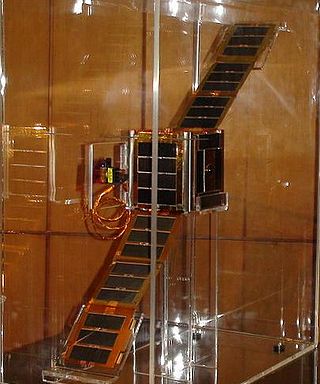
NEE-01 Pegaso is an Ecuadorian technology demonstration satellite, and Ecuador's first satellite launched to space. Built by the Ecuadorian Civilian Space Agency (EXA), it is a nanosatellite of the single-unit CubeSat class. The spacecraft's instruments include a dual visible and infrared camera which allows the spacecraft to take pictures and transmit live video from space.

In 2013, the maiden spaceflight of the Orbital Sciences' Antares launch vehicle, designated A-ONE, took place on 13 April. Orbital Science also launched its first spacecraft, Cygnus, that docked with the International Space Station in late September 2013.
SkySat is a constellation of sub-meter resolution Earth observation satellites owned by Planet Labs, providing imagery, high-definition video and analytics services. Planet acquired the satellites with their purchase of Terra Bella, a Mountain View, California-based company founded in 2009 by Dan Berkenstock, Julian Mann, John Fenwick, and Ching-Yu Hu, from Google in 2017.
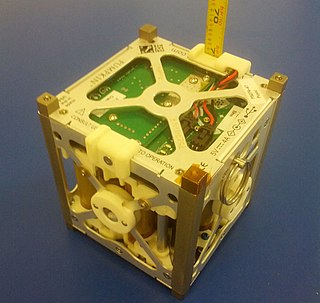
Graham, also known as PhoneSat 1.0a or PhoneSat v1a was a technology demonstration satellite operated by NASA's Ames Research Center, which was launched in April 2013. Part of the PhoneSat programme, it was one of the first three PhoneSat spacecraft to be launched.
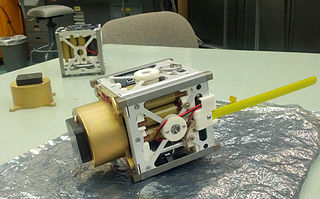
Bell, also known as PhoneSat 1.0b or PhoneSat v1b was a technology demonstration satellite operated by NASA's Ames Research Center, which was launched in April 2013. Part of the PhoneSat programme, it was one of the first three PhoneSat spacecraft to be launched.
TurkSat-3USat is a Turkish communications nanosatellite developed by the Space Systems Design and Test Laboratory and Radio Frequency Electronics Laboratory of Istanbul Technical University (ITU) in collaboration with the Türksat company along with Turkish Amateur Satellite Technology Organization (TAMSAT). It was launched on 26 April 2013.

Planet Labs PBC is a publicly trading American Earth imaging company based in San Francisco, California. Their goal is to image the entirety of the Earth daily to monitor changes and pinpoint trends.
NEE-02 Krysaor is an Ecuadorian technology demonstration satellite, and Ecuador's second satellite launched to space. Built by the Ecuadorian Civilian Space Agency (EXA), it is a single-unit CubeSat nanosatellite. Krysaor is a Pegasus-class spacecraft, a "twin" of Ecuador's first satellite, NEE-01 Pegaso. Like Pegaso, this spacecraft's instruments include a dual visible and infrared camera which allows the spacecraft to take pictures and transmit live video from space.

FUNcube-1 is a complete educational single unit CubeSat satellite with the goal of enthusing and educating young people about radio, space, physics and electronics. It is part of a program which aims to launch more of these educational CubeSats. It is the first satellite with outreach as its primary mission.
ZACube-1 (TshepisoSat), is a South African CubeSat that carries a high frequency beacon transmitter to be used for space weather research. It was launched 21 November 2013 on a Dnepr launch vehicle from Yasny, Russia. Tshepiso is the seSotho word for promise.
Gaofen 1 is a Chinese high-resolution Earth observation satellite, and the first of the Gaofen series satellites.
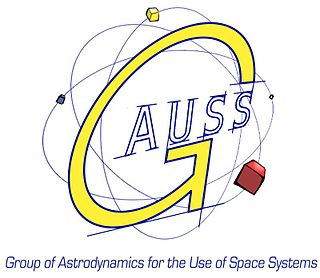
G.A.U.S.S. Srl is an Italian limited liability private company specialized in the development and launch of small satellites, CubeSats and PocketQubes.

The following is a timeline of important events in the history of private spaceflight, including important technical as well as legislative and political advances. Though the industry has its origins in the early 1960s, soon after the beginning of the Space Age, private companies did not begin conducting launches into space until the 1980s, and it was not until the 21st century that multiple companies began privately developing and operating launch vehicles and spacecraft in earnest.

Note: As of the school year of 2022, the Irvine CubeSat STEM Program has been shut down. The Irvine Public School Foundation (IPSF) has reallocated the CubeSat funding elsewhere and Brent Freeze has left the project to pursue other endeavors. This change could have resulted from the lack of productivity during the COVID-19 pandemic and the loss of talented students. It is rumored that the program could return during the 2023 school year.
Irvine CubeSat STEM Program (ICSP) is a joint educational endeavor to teach, train and inspire the next generation of STEM professionals. ICSP involves students from six high schools from Irvine, California, and its main objective is to assemble, test, and launch a CubeSat into low Earth orbit.
